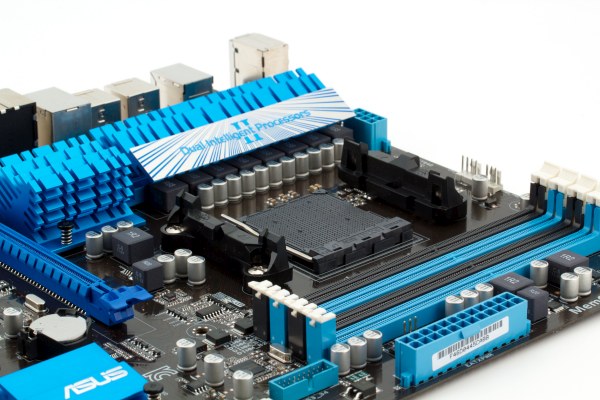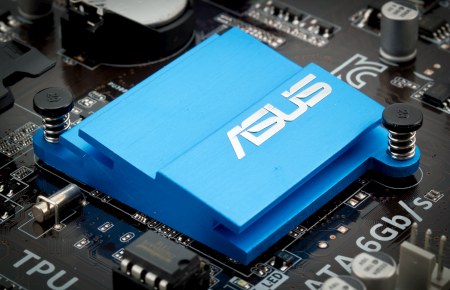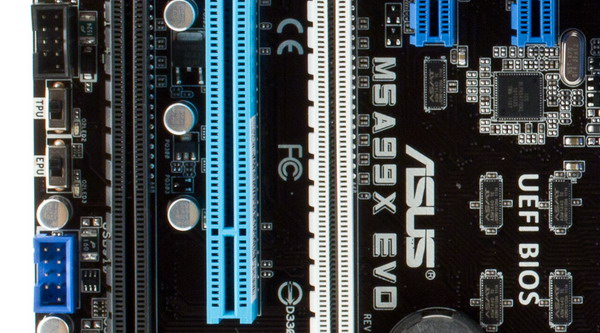Today we shall review ASUS M5A97 EVO, a mid-end motherboard based on AMD 970, and ASUS M5A99X EVO, a similar but higher-end solution for those willing to build a rig with multiple graphics cards working in symmetrical CrossFire or SLI.
Design
ASUS M5A97 EVO does have a couple of graphics card slots and formally supports Quad CrossFire and SLI configurations of two dual-GPU cards. But the performance configuration it offers is not optimal: the primary PCIe x16 slot has 16 lanes all the time, while the second only has 4 lanes from reserve. In all other aspects, ASUS M5A97 EVO is equipped really well for a mid-end solution.
One thing you note is that 2 onboard SATA ports are situated separately from the rest. However, all 6 onboard ports (which are SATA 3.0) are supported by the chipset. The 2 eSATA 2.0 ports on the back panel are supported by an auxillary controller.
ASUS engineers provided all USB ports the chipset offers, 14 in total, of which 6 are on additional brackets. Of course, there's a USB 3.0 controller as well. It provided 4 ports, and you can connect a couple to the front panel of your enclosure. Legacy interfaces include a COM port on a bracket.
The higher-end ASUS M5A99X EVO differs by supporting symmetrical CrossFire and SLI configurations, so if you plan to install a second graphics card, choose this model. The first two PCIe x16 slots either work as x16+x0 (single card, obviously) or as x8+x8 with two graphics cards. The third one, brown, is always connected to 4 PCIe lanes.
In all other aspects, the layout and features of two today's motherboards are very much alike. However, ASUS M5A99X EVO has SATA controllers and has all onboard SATA ports in one place.
Heatsinks only differ from classic by having fins of original shape. There are three separate heatsinks: two on chipset bridges and one on the VRM. ASUS M5A99X EVO has the Northbridge and MOSFET heatsinks interconnected by a heatpipe. Cooling surface isn't large, unfortunately, and you will have to provide some airflow on the heatsinks. Especially so if you overclock. However, the direction of fins will help even if you only have a standard cooler.
The Southbridge heatsink is also fancy, and perhaps some users would like to see a simpler device with needles or plates that would also provide better heat dissipation.
If you like switches, you will be pleased. ASUS M5A97 EVO has one for TPU, ASUS M5A99X EVO has that and another for EPU. Both can also be enabled in BIOS. TPU is related to automatic overclocking, and EPU is advertised as a way to reduce power consumption in addition to what you save with Cool'n'Quiet and such. In reality, EPU benefits are very hard to find. At least, tools measuring instantaneous power won't do. You'll need a more sensitive counter that will maybe measure some watts saved monthly.
Both motherboards have identical CPU VRMs. Each has 8 phases, with 2 MOSFETs per phase. There are 11 x 820 µF and 3 x 270 µF capacitors. This isn't top-end, but it's still enough unless you're going to overclock the highest-end CPUs. Both boards support all modern processors with TDPs up to 140W.
Write a comment below. No registration needed!



